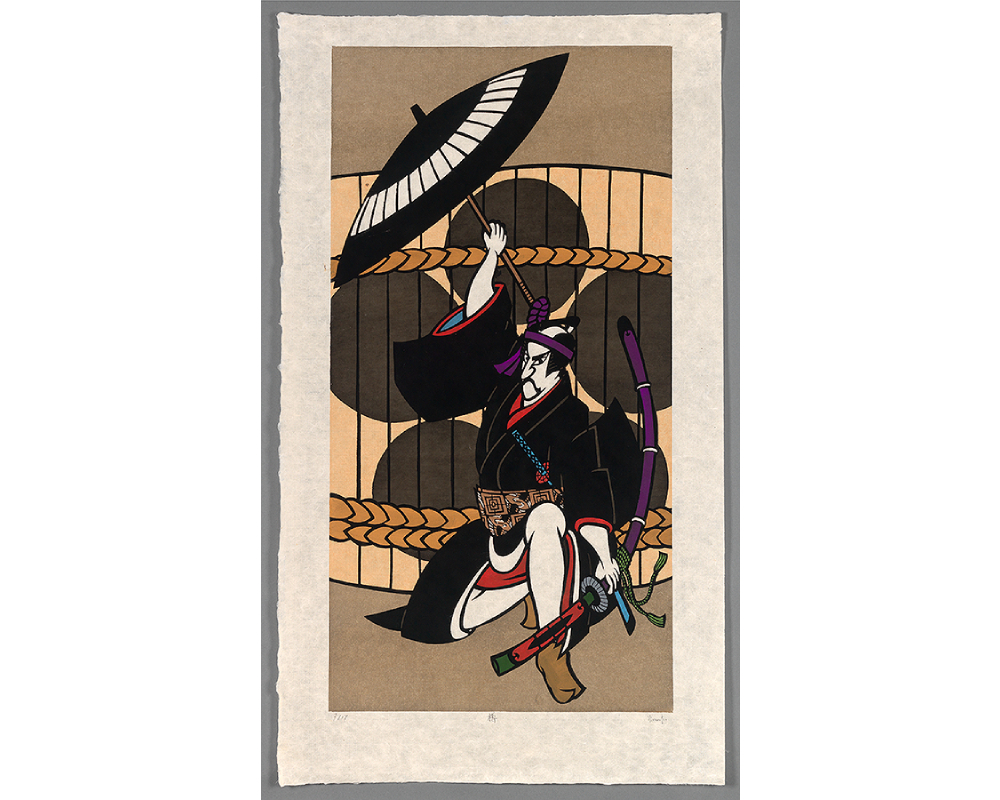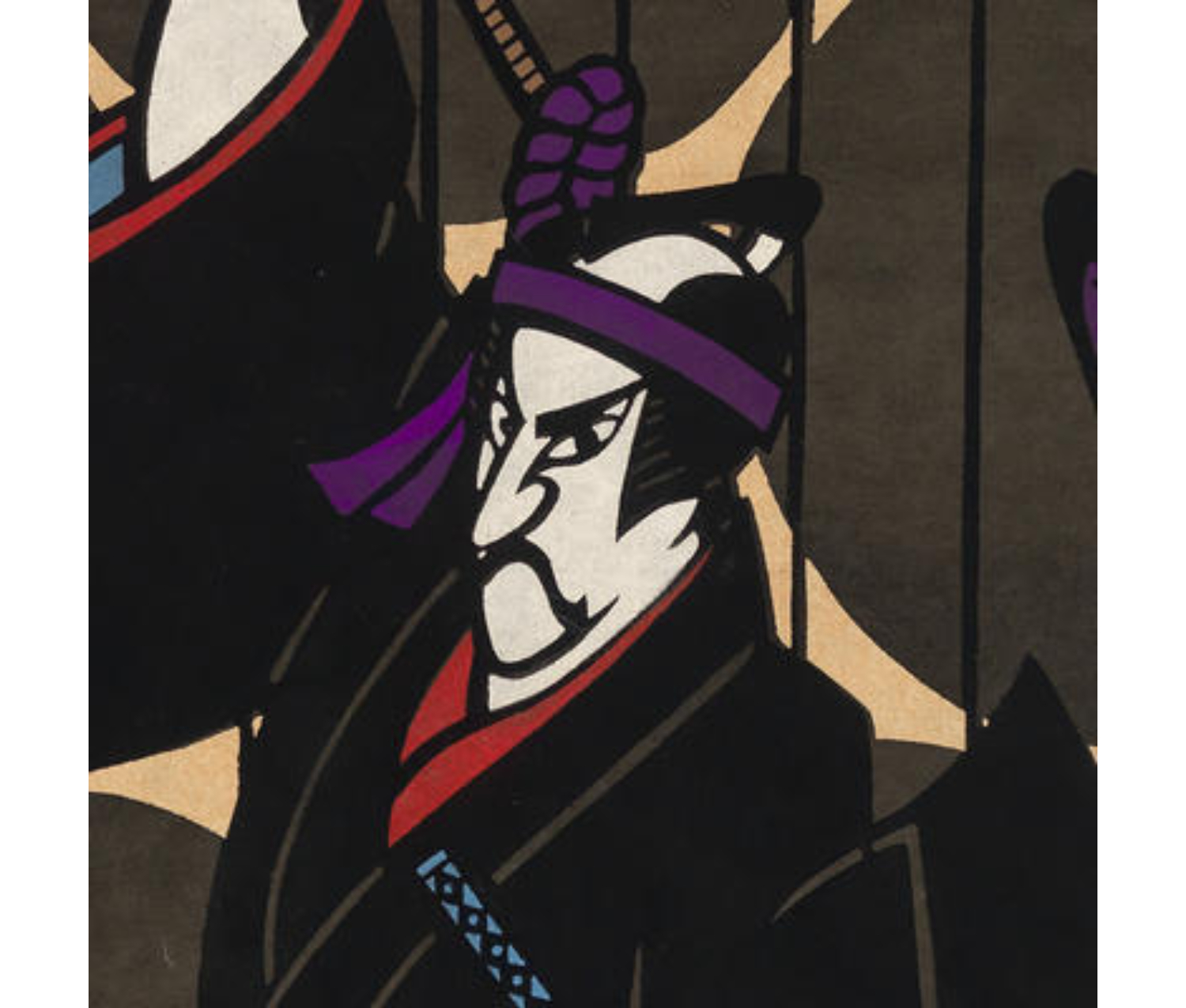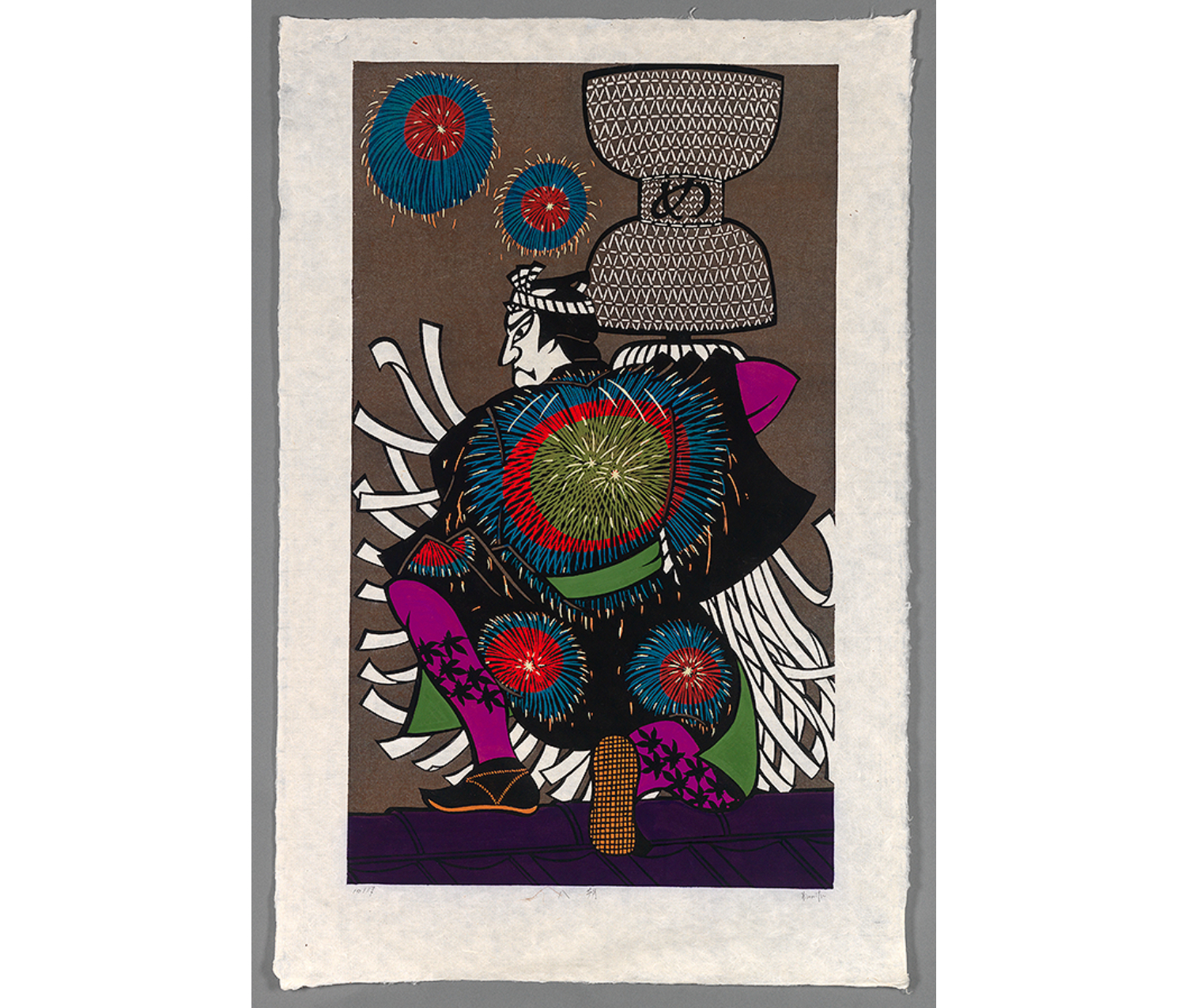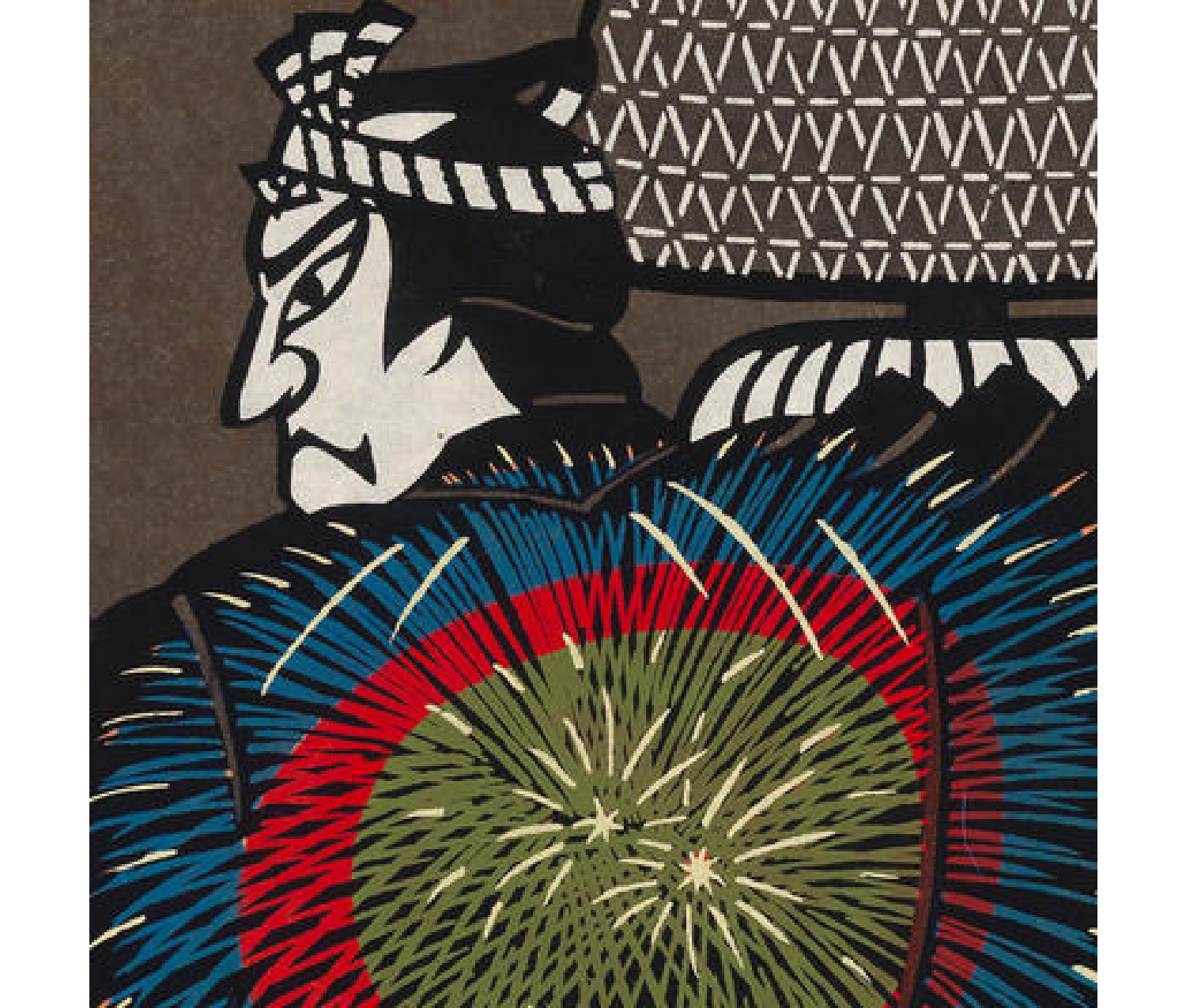
Tolman Collection: Hiromitsu Takahashi
Guest blogger Kayla A. Gaskin is a Smith College student, class of 2017, majoring in East Asian Languages and Literatures. She is a Student Assistant in the Cunningham Center for Prints, Drawings, and Photographs.
More about the Tolman Collection can be found in the post Tolman Collection: Reika Iwami.
In honor of the Japanese art collections gifted by Hilary Tolman to the Cunningham Center, I have chosen to review Hiromitsu Takahashi – one of whose works were donated. Hiromitsu’s beautifully vibrant and slightly playful prints are a modern take on ukiyo-e, a type of Japanese woodblock printing developed during the country’s Edo period (1603-1868). They largely starred Kabuki actors playing different societal roles – such as samurai, courtesans, etc. However, not much information can be found on Hiromitsu himself. Of the few sources I was able to find, all reiterate he is currently a noted Japanese artist in his late 50’s, who draws inspiration from Yoshitoshi Mori, a modern artist influenced by ukiyo-e, for whom Hiromitsu's parents worked. Hiromitsu's work has roots in traditional artistry, yet it is close to Yoshitoshi’s style.

Detail of Taru
Hiromitsu’s Taru (above) is similar to many traditional ukiyo-e works. The male protagonist squats in a battle stance – akin to gestures during Kabuki scenes. On a foundational level, both his hairstyle and dress are also the same. For example, his hair is traditionally shaved from his forehead to the center of his head while the rest of his hair is tied up into a bun. Furthermore, like traditional aragoto prints (a subsection of ukiyo-e) the weapon is oversized. However, though Taru’s protagonist faces the viewer with a fierce expression, notably his eyes are not crossed. A key trope used not only in traditional ukiyo-e but in Kabuki as well, representing virility and power. Another aspect to note is the blandness of his clothing; although hisobi (belt) has some patterning, any further intricate detail is absent – the complete opposite of intricate clothing design in other prints of Kabuki actors. In general, Taru seems very simplified in comparison.

Detail of Taru

Hiromitsu Takahashi. Japanese, b. 1959. Hakkasu, 2004. Stencil printed in color on lightweight, slightly textured, cream-colored Asian paper. The Hilary Tolman, class of 1987, Collection. Gift of The Tolman Collection, Tokyo. Photography by Petegorsky/Gipe. SC 2014.12.30.
However the same cannot be said for Hassaku, a piece filled with bright color and detailing. Unlike the protagonist of Taru, this figure has a black leaf pattern on both legs and fireworks etched into the back of his black robe. However the firework pattern is non-traditional, and appears almost abstract as it mirrors the print’s backdrop. Additionally, Hassaku uses vivid, dark pop colors such as the protagonist’s magenta underlayer, creating an ominous feel. In terms of scenery, traditional ukiyo-e maintained either realistic portrayal, or merely left it blank. However, this background features a tiled roof in a mardi gras purple. Ultimately, elements of ukiyo-e act as a platform from which Hiromitsu branches out towards something new.

Detail of Hassaku
Like Yoshitoshi's prints, Hiromitsu’s work is simplified to an almost cartoon-like level, and becomes an abstraction from the intentional realism qualities of originalukiyo-e. He largely utilized Yoshitoshi’s simplification of the ukiyo-e style. Still, although Hiromitsu drew inspiration from Yoshitoshi, Hiromitsu’s work maintains some degrees of detail and human body proportions, whereas Yoshitoshi’s figures are seemingly almost composed of shapes – akin to Picasso in style. Furthermore, the design of dress in Yoshitoshi’s work feature only monolithic colors and the skin of his protagonists are brown – as opposed to the ghost-white complexions in both traditionalukiyo-e and Hiromitsu’s pieces.
Both Hassaku and Taru are colorfully stunning yet grave due to the hues in which Hiromitsu uses. Although the prints themselves are stylistically plain, their simplicity generates an aura of elegance. Ultimately, although Hiromitsu uses aspects of both new and old, the subsequent blend of the two creates a notable style all his own.